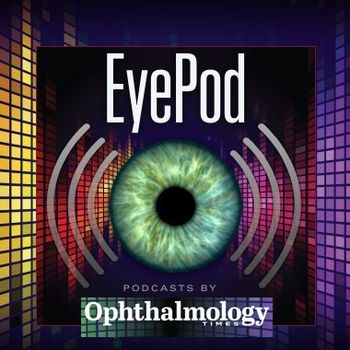
Interventional Glaucoma
Latest News

Latest Videos

CME Content
More News

The iDose platform is designed to address ubiquitous patient non-adherence and chronic side effects associated with topical medications by providing 24/7 release of medication.

The long-term analysis show clinically and statistically significant reductions in intraocular pressure through up to 36 months postoperatively.

The campaign will spotlight educational resources and share stories of individuals and families living with glaucoma to raise awareness and encourage proactive eye health management.

These resources include downloadable fact sheets, glaucoma financial assistance resources, shareable social media graphics, and a dedicated webpage.

The 14th annual Glaucoma 360 conference, co-founded by Adrienne Graves, PhD, and Andrew Iwach, MD, and hosted by Glaucoma Research Foundation, will be held from February 6-8, 2025, at the Westin St. Francis in San Francisco, California. The event will focus on the latest advancements in glaucoma care and encourage innovation and collaboration.

Iantrek’s CREST Registry reports 1-year outcomes for a bio-interventional glaucoma treatment, demonstrating significant IOP reduction, medication reduction, and a favorable safety profile, offering a promising new approach for open-angle glaucoma management.

Bausch + Lomb announced the acquisition of the ELIOS system, a laser-based technology that offers a new approach to treating glaucoma, particularly in conjunction with cataract surgery.

According to researchers, GPT-4o demonstrates potential in generating comprehensive differential glaucoma diagnoses but falls short in primary diagnostic accuracy, underscoring its role as a complementary tool rather than a standalone diagnostic solution.

PolyActiva’s phase 2 clinical trial of its PA5108 glaucoma implant met efficacy and safety end points, demonstrating more than 20% reduction in IOP. The biodegradable implant offers sustained drug delivery for up to 26 weeks, addressing challenges of patient adherence and improving glaucoma treatment outcomes.

While studies of obesity and tobacco and alcohol consumption showed that many chronic diseases are affected by the factors being studied, none had mentioned an effect on glaucoma progression.

Connect, learn, and innovate in a family-friendly atmosphere: What to expect at EnVision Summit 2025
The EnVision Summit, co-founded by Bonnie An Henderson, MD, is a unique family-oriented, multispecialty ophthalmology CME conference, along with a newly introduced optometry track. Henderson sits down with Ophthalmology Times to talk about the 2025 conference that will take place February 14 to 17 at the Caribe Hilton San Juan, in Puerto Rico.

SpyGlass Pharma completed enrollment in a Phase 1/2 trial evaluating its drug delivery platform for glaucoma and ocular hypertension. Designed for implantation during cataract surgery, the platform delivers bimatoprost to lower intraocular pressure for up to 3 years.

This retrospective cohort study was designed to provide further information on the association between BP parameters and VF progression over time.

Robert T. Chang, MD, from Stanford University discusses how large language models are transforming ophthalmology by enhancing patient communication, documentation, and education, while also addressing ethical considerations and potential future applications in glaucoma care.

While anxiety and depression may cause vision loss, physicians can offer hope

Moon Jeong Lee, MD, shares how volunteering in geriatric care shaped her career path.

Ripple will lead preclinical development of RTC-620 while AbbVie will lead the clinical and commercialization activities upon exercise of option-to-license agreement.

According to the company, topline results will be presented at the 2024 American Academy of Ophthalmology Annual Meeting, being held October 18 to 21 in Chicago, Illinois.

German researchers found that their study results suggest that the effect of glaucoma on the elapsed time depends on disease progression. This uncertainty during everyday navigation tasks may adversely affect patients’ quality of life.

Common glaucoma treatments may worsen ocular surface disease and meibomian gland dysfunction, leading to discomfort, redness, and even poor treatment compliance.

Push to identify biomarkers for earlier diagnosis, new therapeutic targets.

Research by investigators at Trinity College in Dublin shows how the gene therapy conferred significant benefit in animal models, and in human cells derived from people with glaucoma.

In the case study, a 63-year-old patient presented with severe acute pain in the right eye, which was diagnosed as a pupillary block leading to acute angle closure glaucoma.

According to researchers at Nanyang Technology University Singapore, smart contact lenses can be used to correct vision, monitor the health of the user, and flag and treat diseases for patients diagnosed with chronic health conditions such as glaucoma and diabetes.

Rationale for delving into this topic is the recent studies that have reported that active and healthy living can reduce IOP.

















































.png)


